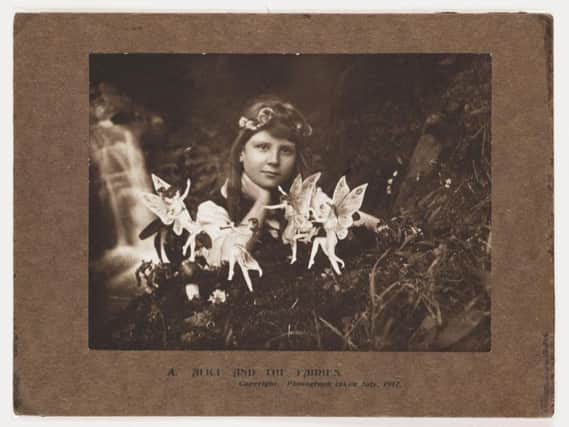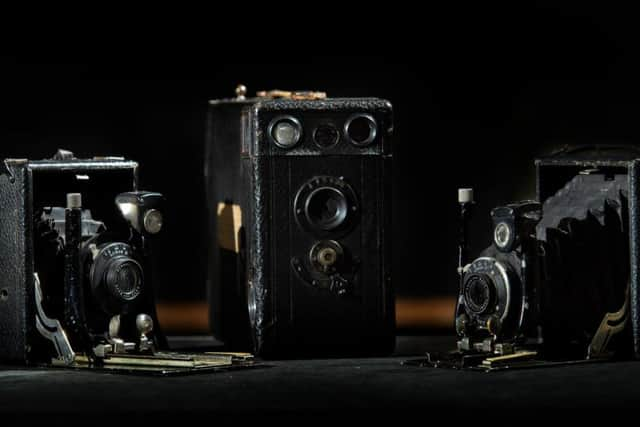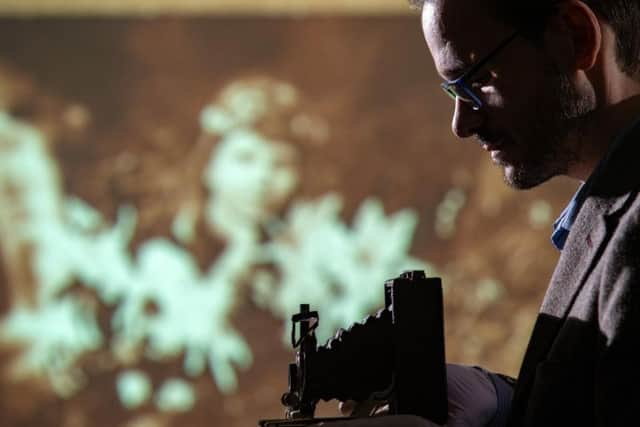Camera which took picture of Cottingley Fairies to go on display in Yorkshire


The instrument which confounded the adage that the camera cannot lie was a gift from the usually forensically-minded Sir Arthur Conan Doyle, creator of Sherlock Holmes, and had been locked away by its owner’s family.
Its acquisition by a Yorkshire museum will see it displayed for the first time, close to the hoax it was used to perpetrate.
Advertisement
Hide AdAdvertisement
Hide AdThe legend of the Cottingley Fairies – woodland nymphs who appear in five photographs taken a century ago by two young girls at the bottom of their garden – has been the subject of a film and several books.


The exhibition of one of the cameras on which they were taken would write the final chapter in their story, said the National Science and Media Museum in Bradford, which paid £3,400 for it at auction.
It was one of a pair given by Conan Doyle to Frances Griffiths and her cousin, Elsie Wright, in 1920, after they used their own camera to produce the first photos of fairies dancing outside their home at Cottingley Beck, near Bingley.
Webcam pictures show deep snowfall on the Settle and Carlisle Railway in the Yorkshire DalesRosebud Preserves - the award-winning Yorkshire business that started from a family kitchen 30 years agoThey were exhibited in Halifax at a conference on fairy life arranged by the Theosophical Society, confirmed as genuine by photography experts and corroborated by Conan Doyle, a noted spiritualist as well as author. He discussed the pictures at length in an article on fairies for The Strand magazine.
Advertisement
Hide AdAdvertisement
Hide AdNevertheless, doubts persisted about the authenticity of the photographs and the girls were asked to produce more images using the cameras given to them by Conan Doyle.


In fact, as the girls later admitted, they had been no more than pictures cut from a book and held up with hat pins – although Frances maintained until her death in 1986 that the final one was genuine.
The suspension of belief they aroused had to be seen in the context of their time, said Geoff Belknap, the museum’s head curator.
“It’s hard to judge the way people can be convinced by what they see as visual evidence,” he said.
Advertisement
Hide AdAdvertisement
Hide Ad“The way that we see them now is not the way that people would have necessarily seen them in the early 20th century.
More than 100,000 people set to visit Scarborough for Yorkshire's first staging of national Armed Forces Day celebrationsHelp needed to fix Hardcastle Crags’ famous stepping stones“There had been so many losses during the First World War, and so many people wanting to contact loved ones they had lost, that they saw photography as a way of investigating a world they couldn’t access. It was as if it had mystical powers.”
Since its birth, photography had been the tool of the trickster as well as the artist and remained so, he noted.
“Today, we have a different kind of visual landscape that informs how we view the world and a different level of scepticism,” he said.
Advertisement
Hide AdAdvertisement
Hide AdThe camera, a folding quarter-plate Cameo model with a lens on a sliding bellow, was put up for auction by Frances’ daughter and will be displayed alongside other items which have long been in the museum’s collection. They include the two other cameras, original prints of the photographs, and watercolour sketches of fairies by Elsie.
The new acquisition will also be loaned to Leeds University for a future exhibition centred around Conan Doyle. Although they admitted that most of their pictures of fairies had been faked, Frances Griffiths and Elsie Wright always maintained that they had seen the creatures dancing in Cottingley Beck.
Frances was nine and her cousin 16 when the first shot was taken in the summer of 1917. The apparent existence of an enchanted oasis in a world torn apart by war, captured the popular imagination – and when a second was produced a few months later, purporting to show a gnome greeting Elsie, imagination ran riot.
The pictures are still among the most inquired-about in the Bradford museum’s collection.